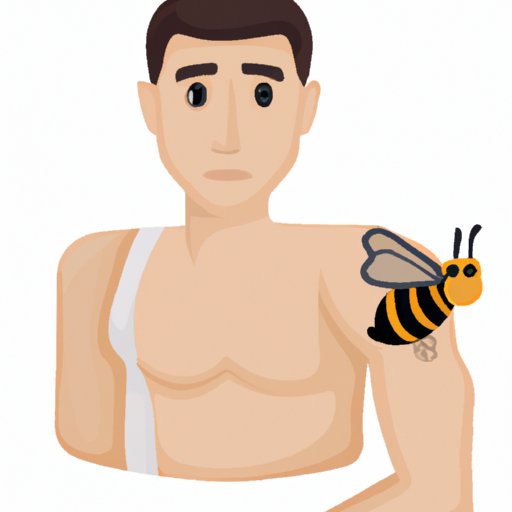I. Introduction
Bee stings can be painful and uncomfortable, but they can also be dangerous for those with severe allergies. Knowing how to properly treat a bee sting is important to alleviate symptoms and prevent serious reactions. This article offers a step-by-step guide on how to identify symptoms of bee stings and how to properly remove the stinger.
II. Prevention is key: How to avoid getting stung by bees
There are many situations where people may come into contact with bees, such as picnics, hikes, or walks in the park. To avoid getting stung, it’s important to wear light-colored clothing and avoid scents that attract bees, such as perfumes or strong smelling lotions. Additionally, if you’re eating or drinking, make sure to cover your food and sweet drinks. If you do encounter bees, try to remain calm and still as sudden movements may provoke them to sting.
III. Identifying symptoms and when to seek medical attention
Most common symptoms of bee stings include pain, swelling, and itching around the site of the sting. It’s important to differentiate between normal and allergic reactions to bee stings, as allergic reactions can be fatal. Signs of an allergic reaction include hives, difficulty breathing, dizziness, or swelling of the throat, mouth or face. Seek medical attention immediately if you experience any of these symptoms.
IV. Allergic reactions and why some people are more prone
Some people are more prone to allergic reactions to bee stings due to several risk factors, such as previous allergic reactions to bee stings, a history of allergic reactions to other allergens, or asthma. It’s important to carry an epinephrine auto-injector if you’re prone to severe allergic reactions. If you experience an allergic reaction, use the auto-injector immediately and seek emergency medical attention.
V. Removing the sting: Step-by-step instructions
It’s important to remove the bee stinger as soon as possible to alleviate symptoms and prevent further venom from entering your body. Use tweezers or a credit card to scrape the stinger away from the skin. Do not use your fingers as it may push more venom into your body. Once you have removed the stinger, wash the area with soap and water.
VI. Over-the-counter treatments
Over-the-counter treatments such as hydrocortisone cream, calamine lotion, or oral antihistamines can help relieve symptoms such as swelling and itching. Oral antihistamines are especially helpful for those with mild to moderate allergic reactions. It’s important to carefully read the label and instructions before using any over-the-counter treatments.
VII. Natural remedies for soothing the sting
Some natural remedies that can help soothe bee stings include applying baking soda paste, lavender oil, or tea tree oil. Baking soda paste can be made by mixing baking soda and water until it forms a paste-like consistency and applying it to the sting. Essential oils can be applied directly to the sting, but it’s important to do a patch test first to ensure you’re not allergic to the oil.
VIII. Managing pain and discomfort
Applying ice or a cold compress to the sting can help alleviate pain and reduce swelling. Taking pain relievers such as ibuprofen or acetaminophen can also help manage pain and discomfort associated with bee stings. It’s important to follow the recommended dosage and instructions for any pain relievers.
IX. Conclusion
Knowing how to properly treat a bee sting is important to alleviate symptoms and prevent severe reactions. By following the step-by-step guide on identifying symptoms and properly removing the stinger, as well as utilizing over-the-counter treatments and natural remedies, you can greatly reduce the discomfort associated with bee stings. Be prepared by carrying an epinephrine auto-injector if you’re prone to severe allergic reactions.
